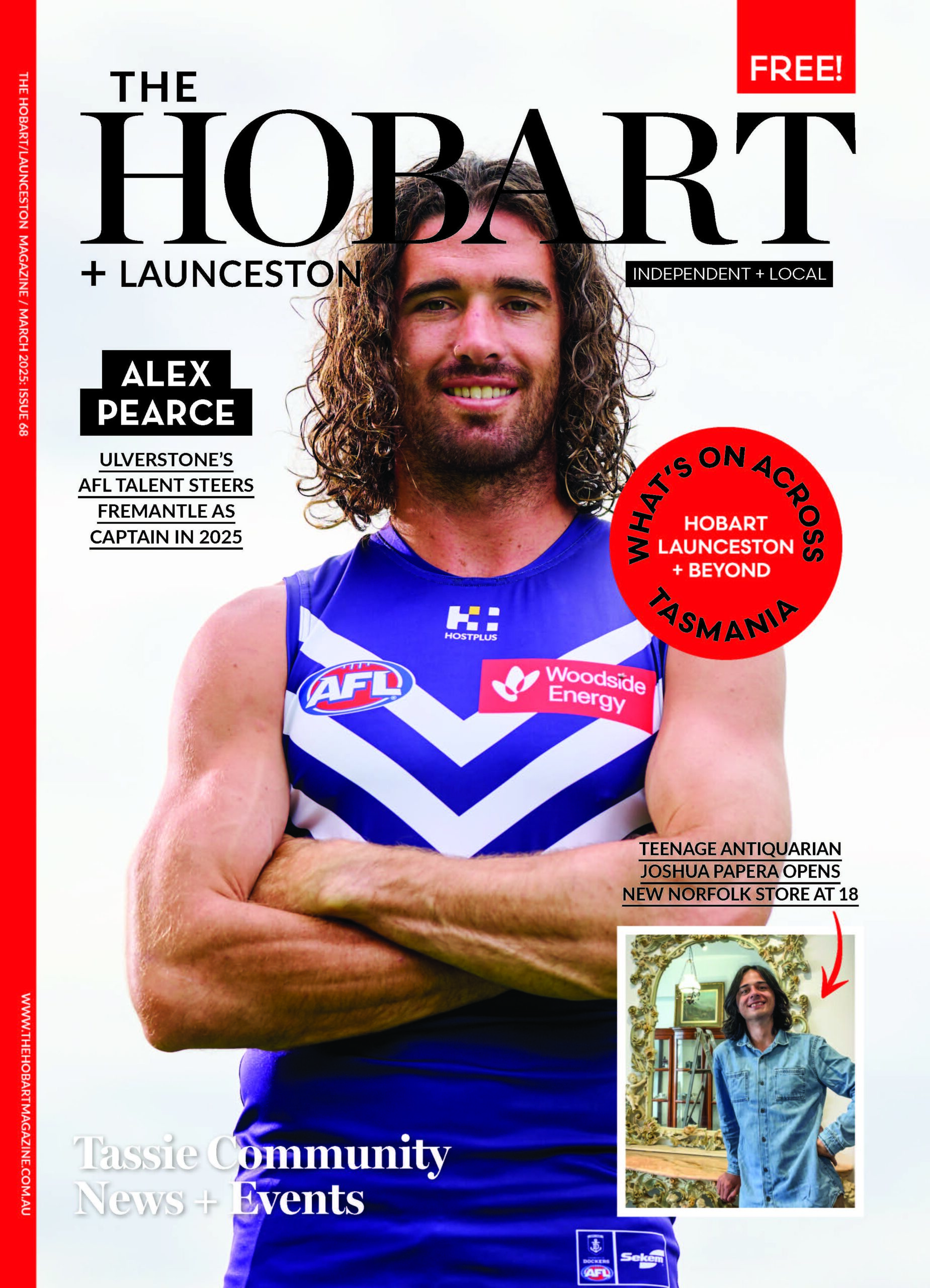Jennifer Anne Cullen
by Lilian Koch

For 43 years Jen has taught children around Tasmania from kindergarten up to grade ten. In 2021 she published her picture book Listening to Tree, which aims to teach children about the many ecosystem processes trees perform, with the overarching message that humans and trees are co-dependent.
Where did you grow up and where do you live now? I grew up in Lenah Valley in the foothills of kunanyi. As kids we were surrounded by bush, so nature was our playground. I now live on the beach in Lauderdale.
Tell us a little about your work? Listening To Tree is the first book I’ve ever published, but I’ve always written little stories with children as a teacher for the better part of 43 years. I like to say that teaching chose me. I got a scholarship to study art teaching, and so really my future was sealed. I majored in ceramics, which is all about digging in the earth, and fire, and I loved it. I taught highschoolers for about seven years, but when my son was born, I realised that early childhood is one of the most creative and exciting times of life. I went back to uni when I was around 32 to study early childhood education for a year, and I’ve never looked back. I found that I could use art in any subject area, whether it be maths, science, or whatever.
It was 20 years ago that I got involved in literacy, and I am now a literacy specialist. I work with children who struggle with reading, and it’s so rewarding to be a part of that process when they start to get it. Not everyone is born with the skills of being able to decode text, as it is a very complex thing. I love to make little books with children for that very reason. Making books is fun, and they can be made from any materials, whether it’s cardboard or toilet paper. You’re essentially inviting the child to be part of the process of learning to understand, and are able to develop concepts more clearly if they are creating their own book. One thing about education people forget, is that the word ‘educate’ means to bring forth. It means to bring out of a child their essence, their expression. In classrooms I always have dedicated areas where children can go at any time and make their own book. It could be about the death of their dog, an emotional experience they’ve had, or a book for somebody else.

How did the inspiration for this book come about? I was drawing in my studio one day and started to get a little frustrated with drawing. I remember gazing into the backyard and looking at the trees, and I thought, trees are absolute miracles of nature. They provide us with so much and we take them for granted. I wanted to create a book about the reverence we should pay to trees. I think that connection with nature is really the essence of the book, stimulating children’s interest in nature and drawing them into what it means to be a part of the natural world.
It was also really important to me to create a work of art that was a departure from what is the ‘norm’ for children’s books. Most children’s literature is in colour. When you present children with a black and white drawing, like in my book, it actually allows their brain to not be persuaded by colour. In their imagination they can create their own colour palette. The background colours on the text pages create a contrast to the monochrome drawings. They’re muted tones though, unlike in a lot of children’s books that use bright colours. I suppose the colours echo the tones of the words in the book.
The words in the book seem to flow like music. Was this intentional? People have said that the tone of the book is very mystical and dreamy. While I was writing it, I was trying to get into a flowing, meditative, rhythmical state where sounds created the atmosphere. Children love sounds. I would love teachers and others to pick this book up and transcribe it into some kind of musical form.
Who do you admire? Anyone who is involved in preserving all life forms, from the forest sitters in the takayna/Tarkine, to Wade Davis, an ethnobotanist and anthropologist, and Jane Goodall, who started the Roots and Shoots program.
Favourite podcast or tv show? I like to hear people’s stories on ABC’s Conversations.
What are you reading now? Truganini: Journey through the Apocalypse by Cassandra Pybus.
What was your first job? In my student days, I was a waitress at The Malaysian Teahouse in Macquarie St, now long gone.
What are your daily news/social media habits? I have a varied diet of ABC, SBS and NITV for news and programs. I use Instagram for photos.
Your favourite place (in Hobart) for…
Breakfast: Daci and Daci Bakers
Lunch: Sachié Café
Dinner: Suminato
Favourite Hobart secret? Silver Falls, kunanyi.

